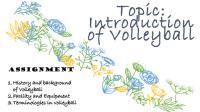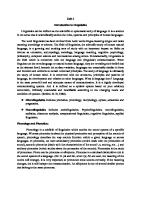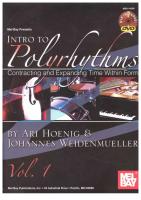Intro To Linguistic 2 - Final Test Review [PDF]
BÀI THI GIỮA KỲ - HỌC KỲ 2 - NĂM HỌC 2014 - 2015 - Khóa: QH 2012 Môn thi: Introduction to English linguistics 2 - Thời g
37 4 4MB
Papiere empfehlen
![Intro To Linguistic 2 - Final Test Review [PDF]](https://vdoc.tips/img/200x200/intro-to-linguistic-2-final-test-review.jpg)
- Author / Uploaded
- Lãnh Nguyệt
Datei wird geladen, bitte warten...
Zitiervorschau
BÀI THI GIỮA KỲ - HỌC KỲ 2 - NĂM HỌC 2014 - 2015 - Khóa: QH 2012 Môn thi: Introduction to English linguistics 2 - Thời gian làm bài: 45 phút
ĐỀ 05
Họ và tên: ......................................................................................................................... Ngày sinh:...................................Lớp: ............................Chữ ký CBCT: …………………….. (Thí sinh không được phép sử dụng tài liệu) ________________________________________________________________________________________
1. a. b. c. d. e.
Mark the following sentences as true (T) or false (F) (1.5 mark) Deixis requires a speaker and a hearer sharing the same context. ……... Epistemic context provide information about the relation between speaker and hearer. …….. Politeness is a universal concept that does not vary among cultures. …….. All indirect speech acts are interrogatives. …….. While discourse analysis is closer to linguistics, pragmatics is closer to …….. sociolinguistics and sociology. f. Conversation analysis focuses on the analysis of the text with consideration of ……... psychological and other factors. 2. State the types of deixis: personal (P) , temporal (T), spatial (S), or NOT deixis (N) of the underlined expressions in the following sentences (1 mark) a. Number 24 (1) left already. …………………………………………………………………………………………………. b. We’ll (2) start in 5 minutes (3) in room 201 (4). ………………………………………………………………………………………………….
3. Find ONE presupposition of each of the given sentences (1 mark) a. If she had another chance, I believe she would succeed. ………………………………………………………………………………………………………………………………………………………………… ……………………………………………………………………………………………………………………………………………………..
b. Do you regret not seeing her yesterday? ………………………………………………………………………………………………………………………………………………………………… ……………………………………………………………………………………………………………………………………………………..
4. Label the italicized utterances as direct speech act (D) or indirect speech act (I) (1 mark): a. Do you have the time? ……………………… b. Meg: How was the presentation Kev? Kev: Go and have a drink with me. ……………………… c. We are back to this point in a minute. ……………………… d. She: I’m so disappointed He: I know, that’s my fault j ………………………
5. Perform the following act in two ways: (a) using the positive politeness strategies and (b) using the negative politeness strategies (1 mark) COMPLAIN THAT SOMEONE IS MAKING TOO MUCH NOISE IN THE LIBRARY a. ……………………………………………………………………………………………… b. ………………………………………………………………………………………………
6. Identify the types of cohesive devices working in the following text. Take examples in the text to illustrate each type (2.5 mark) My Darling Wife This note is to warn you of a diabolical plot entered into by some of our so called friends - (ha!) calendar makers and even our own children. These and others would have you believe we've been married 20 years. 20 minutes maybe - but never 20 years. In the first place it is a known fact that a human cannot sustain the high level of happiness I feel for more than a few minutes - and my happiness keeps increasing. I will confess to one puzzlement but I'm sure it is just some trick perpetrated by our friends - (Ha again!) I can't remember ever being without you and I know I was born more than 20 mins ago. Oh well - that isn't important. The important thing is I don't want to be without you for the next 20 years, or 40, or however many there are. I've gotten very used to being happy and I love you very much indeed. Types of cohesive devices
Examples from the passage
……………………………........
…………………………………………………………………………………………
……………………………........
…………………………………………………………………………………………
……………………………........
…………………………………………………………………………………………
……………………………........
…………………………………………………………………………………………
……………………………........
…………………………………………………………………………………………
……………………………........
…………………………………………………………………………………………
…………………………….......
…………………………………………………………………………………………
…………………………….......
…………………………………………………………………………………………
……………………………........
…………………………………………………………………………………………
……………………………........
…………………………………………………………………………………………
……………………………........
…………………………………………………………………………………………
……………………………........
…………………………………………………………………………………………
……………………………........
…………………………………………………………………………………………
………………………………….
…………………………………………………………………………………………
………………………………….
…………………………………………………………………………………………
……………………………........
…………………………………………………………………………………………
………………………………….
………………………………………………………………………………………..
…………………………………
………………………………………………………………………………………..
7. Identify all the adjacency pairs in the following conversation. (2 mark) MEG: (1) Well, hello there, Julia! (2) Long time no see! JULIA: (3) Meg! Hi! (4) What a coincidence! (5) I haven’t seen you in ages! (6) What are you doing here? MEG: (7) I just got a new job in the city, so I’m shopping for some clothes. (8) Hey, what do you think of this shirt? JULIA: (9) Hmmm … well, you know how much I love blue. (10) See? I’ve got the same shirt! MEG: (11) You always did have good taste! (12) What a small world.
BÀI THI GIỮA KỲ - HỌC KỲ 2 1. g. h. i. j. k. l.
Mark the following sentences as true (T) or false (F) (1.5 mark) Social context refers to where the conversation is taking place. Presupposition refers to what the listener assumes is true or known by a speaker. Different structures can be used to accomplish the same basic functions. Negative face is the need to be connected, to be a member of the group. Cataphoric reference is when a reference is referring back to something. Conversation analysis focuses on the analysis of both spoken and written language.
……... …….. …….. …….. …….. ……...
2. State the types of deixis: personal (P) , temporal (T), spatial (S), or NOT deixis (N) of the underlined expressions in the following sentences (1 mark) a. They bought this house in 2000. …………………………………………………………………………………………………. b. We got married on Friday January 15th, 2016. …………………………………………………………………………………………………. 3. Find TWO presuppositions of each of the given sentences (1 mark) a. When did John hand in his assignment? ……………………………………………………………………………………………………………… ……………………………………………………………………………………………………………… b. She is aware that there are mistakes in her essays. ……………………………………………………………………………………………………………… ……………………………………………………………………………………………………………… 4. e. f. g. h. 5.
Label the italicized utterances as direct speech act (D) or indirect speech act (I) (1 mark): Why don’t you give her a call? ……………………… I want to know who has used my computer. ……………………… The police have arrested the criminal. ……………………… A: Do cats like fish? B: Is the Pope catholic? ……………………… Perform the following act in two ways: (a) using the positive politeness strategies and (b) using the negative politeness strategies (1 mark) ASK A FRIEND TO HELP YOU WITH A DIFFICULT ASSIGNMENT
a. ……………………………………………………………………………………………………………… b. ………………………………………………………………………………………………………………
6.
Identify the types of cohesive devices working in the following text. Take examples in the text to illustrate each type (2.5 mark)
On behalf of the great state of Illinois, crossroads of a nation, Land of Lincoln, let me express my deepest gratitude for the privilege of addressing this convention. Tonight is a particular honor for me because, let’s face it, my presence on this stage is pretty unlikely. My father was a foreign student, born and raised in a small village in Kenya. He grew up herding goats, went to school in a tin-roof shack. His father -- my grandfather -- was a cook, a domestic servant to the British. But my grandfather had larger dreams for his son. Through hard work and perseverance my father got a scholarship to study in a magical place, America, that shone as a beacon of freedom and opportunity to so many who had come before. While studying here, my father met my mother. She was born in a town on the other side of the world, in Kansas. Her father worked on oil rigs and farms through most of the Depression. The day after Pearl Harbor my grandfather signed up for duty; joined Patton’s army, marched across Europe. Back home, my grandmother raised a baby and went to work on a bomber assembly line. After the war, they studied on the G.I. Bill, bought a house through F.H.A., and later moved west all the way to Hawaii in search of opportunity. And they, too, had big dreams for their daughter. A common one, born of two continents. Types of cohesive devices
Examples from the passage
……………………………........
…………………………………………………………………………………………
……………………………........
…………………………………………………………………………………………
……………………………........
…………………………………………………………………………………………
……………………………........
…………………………………………………………………………………………
……………………………........
…………………………………………………………………………………………
……………………………........
…………………………………………………………………………………………
…………………………….......
…………………………………………………………………………………………
…………………………….......
…………………………………………………………………………………………
……………………………........
…………………………………………………………………………………………
……………………………........
…………………………………………………………………………………………
……………………………........
…………………………………………………………………………………………
……………………………........
…………………………………………………………………………………………
……………………………........
…………………………………………………………………………………………
…………………………………. ………………………………………………………………………………………… …………………………………. ………………………………………………………………………………………… ……………………………........
7.
…………………………………………………………………………………………
Identify all the adjacency pairs and insertion sequences in the following conversation between a customer (C) and a travel agent (A) (2 mark)
C: I need to travel in May. (1) A: And, what day in May do you want to travel? (2) C: OK, uh, I need to be there for a meeting... (3)That's from the 12th to the 15th. (4) A: And you're flying into what city? (5) C: Seattle. (6) A: And what time would you like to leave Pittsburgh? (7) C: Uh hmm I don't think there's many options for non-stop? (8) A: There're three non-stops today. (9) C: What are they? (10) A: The first departs PGH at 10am and arrives Seattle at 1205 their time, the second one departs PGH at 555pm, arrives Seattle at 8pm, and the last flight departs at 815pm arrives Seattle at 1028pm. (11) C: OK, I'll take the 5ish flight on the night before on the 11th. (12)









